- Home
- Embroider stitches for flowers
How Do You Embroider Flowers?
Let's Start with These 3 Easy Stitches
It’s one of the first things many beginners want to stitch, isn't it? A pretty flower, a leafy vine.
But it’s so easy to look at a beautiful floral design online and just freeze.
In case you were wondering, you don't need dozens of stitches to make a start.
Don't worry about making mistakes. Take a deep breath. Here's the secret: you can start with a handful of simple stitches.
What you'll learn here
By the end of this page you'll be able to:
- Stitch neat tidy Lazy Daisy Stitch petals, that can be combined into different flowers
- Create tiny French Knots for flower centres, or even create buds or pistils
- Position Fly Stitches creatively, for flowers, stems or even leaves
What you'll need
- a 6-8 inch embroidery hoop
- a size 7-9 embroidery needle
- embroidery floss, choose a few favourite colours
- a sharp pair of small scissors
- a 10 inch square of cotton fabric
Stitch 1: Lazy Daisy (Your instant petal)
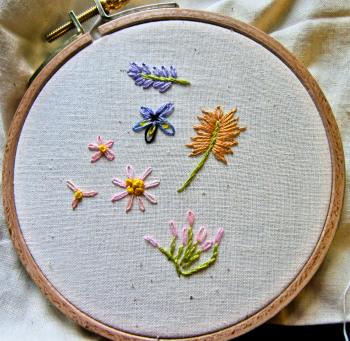
This stitch is exactly what it sounds like. It's cheerful, it's easy-going, and it's probably the most common stitch used for flowers. Why? Because it makes a perfect little petal shape all in one go.
- How to use it: You can arrange five or six in a circle (like in the photo!) to create a classic daisy.
- Play with it: Use a single stitch for a tiny leaf or a tulip bud. Or, stitch them in a line on either side of a stem to make a sprig of lavender.
Want to see it in action? You'll find step by step instructions on this page.
This is one of my all-time favorite stitches for adding quick, pretty details. It's proof that you don't need complicated stitches to make something special.
For a bit of lovely, real-world inspiration, take a peek at how these vintage aprons used lazy daisy stitches. It’s a perfect example of how charming this simple stitch can be.
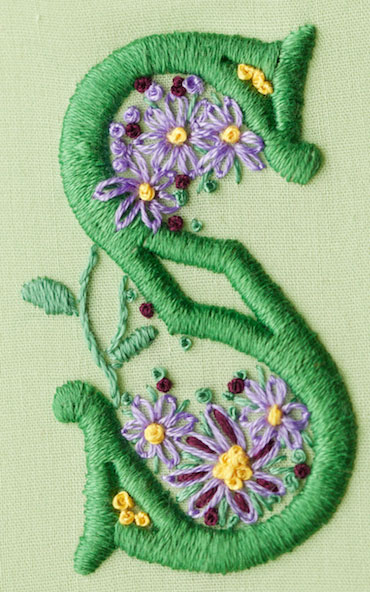
Add lazy daisy flowers inside this padded satin stitch letter.
Once you've got the hang of it, try this strawberry tutorial.
Stitch #2: The French Knot (Your 'Fancy Dot')
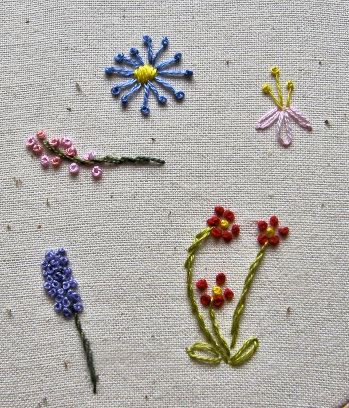
Ah, the famous French Knot. This is the stitch that makes everyone say, "Ooh, how'd you do that?" It looks so impressive, but it's just a tiny, tidy knot that sits on top of your fabric.

This stitch can be a bit tricky for first-timers, but I have a guide to help you get it right every time. And you can watch the video above.
You can see both lazy daisies and french knots representing a flower meadow in my crazy quilt block below.
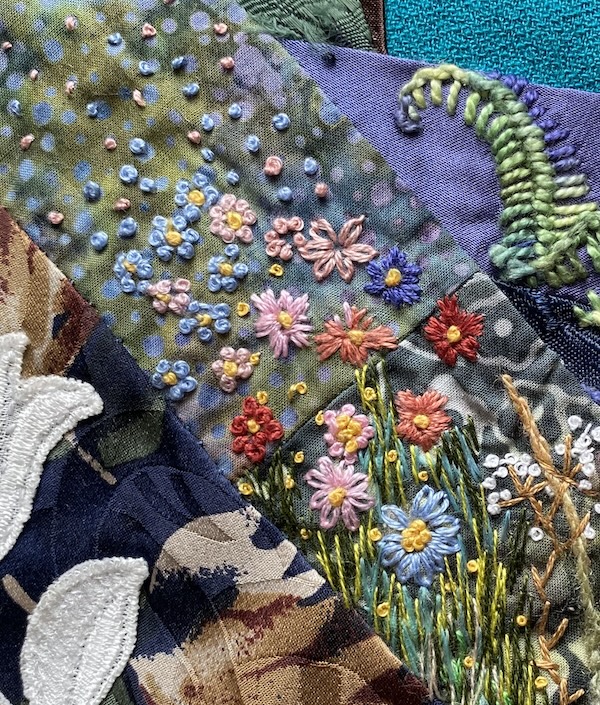 A closeup of a section of a crazy quilt block featuring french knot flowers
A closeup of a section of a crazy quilt block featuring french knot flowersStitch #3: The Fly Stitch (petals and leaves)
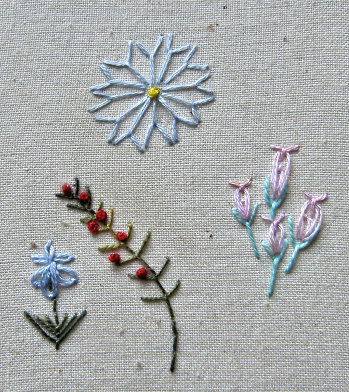
This is one of my most-used stitches. It's a little workhorse! It's most famous for making wonderful little leaves, but it can make flowers, too.
The stitch is basically a "V" shape with a little "tail" at the bottom (which holds the "V" down). You can make that tail long or short.
Time to Plant Your Garden of Stitches
And... that's it!
See? No overwhelm. Just three simple stitches you can combine in endless ways.
With the Lazy Daisy for petals, the French Knot for centers, and the Fly Stitch for leaves, you have everything you need to start stitching a beautiful little meadow.
This is what embroidery is all about. Not memorizing rules, but just grabbing a needle and some colorful thread and having fun.
So, give it a go! What varieties can you come up with?
And please, don't worry about making mistakes. Just have fun creating.


